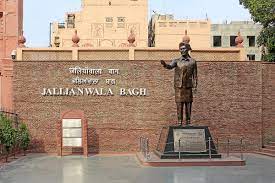The Jallianwala Bagh massacre was one of the most brutal incidents in the history of India’s freedom struggle. On April 13, 1919, a peaceful gathering of Indians was fired upon by British soldiers, resulting in the deaths of hundreds of innocent people. The incident had far-reaching consequences, marking a turning point in India’s fight for independence. In this article, we will explore the Jallianwala Bagh massacre in detail.

Table of Contents
Background
The massacre took place in Jallianwala Bagh, a public garden in Amritsar, Punjab. At the time, India was under British rule, and the British government had passed a series of repressive laws to suppress Indian nationalism. The Rowlatt Act, which gave the British government sweeping powers to detain Indian nationalists without trial, had been passed earlier that year, leading to widespread protests across the country.
Gathering
On April 13, 1919, a large crowd of people had gathered in Jallianwala Bagh to celebrate the Sikh festival of Baisakhi and to protest against the Rowlatt Act. The gathering was peaceful, with men, women, and children sitting on the ground, listening to speeches and singing songs. They were unaware that the British government had banned all public gatherings in the city.
Massacre
In the late afternoon, Brigadier General Reginald Dyer arrived at the scene with a group of soldiers. Without warning, he ordered his troops to open fire on the unarmed crowd. The soldiers fired for about ten minutes, until their ammunition was exhausted. People tried to flee, but the gates of the garden had been locked, and many were trampled to death or drowned in a well in the garden. According to official estimates, 379 people were killed and over 1,200 were injured in the massacre, though other estimates put the death toll much higher.
Aftermath
The massacre led to outrage across India and the world. Mahatma Gandhi, who had been advocating non-violent civil disobedience against British rule, called for a nationwide strike to protest against the massacre. The British government set up a committee to investigate the incident, which became known as the Hunter Committee. Dyer was found guilty of misconduct and relieved of his duties, but he was hailed as a hero by many in Britain. The incident galvanized Indian nationalism, leading to the Non-Cooperation Movement and the eventual attainment of Indian independence in 1947.
Legacy of Jallianwala Bagh Massacre
The Jallianwala Bagh massacre remains a potent symbol of British colonial brutality and Indian resistance. The garden where the massacre took place has been preserved as a national monument, with a memorial to the victims. The massacre has been the subject of numerous books, films, and works of art, including the novel “Train to Pakistan” by Khushwant Singh and the film “Gandhi” directed by Richard Attenborough. The incident is also remembered on April 13 each year as a day of remembrance and reflection.
Conclusion
The Jallianwala Bagh massacre was a defining moment in India’s struggle for independence. It brought to the fore the brutal nature of British colonialism and the resilience of the Indian people. The incident continues to inspire generations of Indians to fight for justice and freedom.
Jallianwala Bagh Massacre: Summary
- The Jallianwala Bagh massacre occurred on April 13, 1919, in Amritsar, Punjab.
- The gathering was peaceful, with men, women, and children sitting on the ground to protest against the Rowlatt Act.
- Brigadier General Reginald Dyer arrived at the scene with a group of soldiers and ordered them to open fire on the unarmed crowd.
- The soldiers fired for about ten minutes, resulting in the deaths of hundreds of innocent people.
- The massacre led to outrage across India and the world.
- The British government set up a committee to investigate the incident, which became known as the Hunter Committee.
- Dyer was found guilty of misconduct and relieved of his duties, but he was hailed as a hero by many in Britain.
- The incident galvanized Indian nationalism, leading to the Non-Cooperation Movement.
- The Jallianwala Bagh massacre remains a potent symbol of British colonial brutality and Indian resistance.
- The incident is remembered on April 13 each year as a day of remembrance and reflection.
Jallianwala Bagh Massacre: Questions
Q. What was the reason for the gathering in Jallianwala Bagh on April 13, 1919?
A. To celebrate Indian Independence Day
B. To protest against the Rowlatt Act
C. To celebrate the Sikh festival of Baisakhi
D. To demand better working conditions for laborers
Answer: C. To celebrate the Sikh festival of Baisakhi.
Q. Who was responsible for the Jallianwala Bagh massacre?
A. Indian nationalists
B. British soldiers
C. Mahatma Gandhi
D. None of the above
Answer: B. British soldiers, specifically Brigadier General Reginald Dyer.
Q. How many people were estimated to have been killed in the massacre?
A. 100
B. 250
C. 379
D. 500
Answer: C. 379.
Q. What was the immediate aftermath of the massacre?
A. The British government declared martial law in Amritsar
B. The British government set up a committee to investigate the incident
C. Mahatma Gandhi called for a nationwide strike
D. All of the above
Answer: B. The British government set up a committee to investigate the incident, which became known as the Hunter Committee.
Q. What was the long-term impact of the Jallianwala Bagh massacre?
A. It led to the Non-Cooperation Movement
B. It galvanized Indian nationalism
C. It became a potent symbol of British colonial brutality and Indian resistance
D. All of the above
Answer: D. All of the above.
Important Links